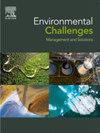Navigating human-sloth bear encounters and attacks in Nepal’s unprotected forests
Q2 Environmental Science
引用次数: 0
Abstract
Human-sloth bear conflict is a recurring issue in multi-use forest landscapes outside protected areas (PAs). In Nepal’s southern region, sloth bears are a major contributor to human-wildlife conflict, yet comprehensive information to inform conflict mitigation and ensure human safety remain limited. To address this gap, we collected questionnaire-based interview data on sloth bear encounters and attacks from 1990 to 2021 around the Trijuga forest, an important sloth bear habitat outside of Nepal’s PAs. Within this time period, 66 human-sloth bear encounters involving 69 human individuals were recorded, with an annual average of 2.06 (SD = 1.48) encounters and 1.75 (SD = 1.34) attacks. Encounters primarily involved working-age men (25–55 years old), whose primary occupation was farming and who frequented the forest daily. They typically occurred between 0900 and 1500, inside forests, and in habitats with poor visibility conditions. Fifty-six encounters resulted in attacks by bears that injured 59 people, with a fatality rate of 8.47 %. Victims of bear attacks frequently had serious injuries, especially to the head and neck areas of the body. Serious injuries were more likely to occur to lone individuals than to people who were in groups of two or more. We suggest the identification of high-risk bear encounter zones through participatory mapping with active community involvement, promoting sustainable alternatives to forest dependence, and outreach programs for local communities to enhance effective human-sloth bear conflict management in Nepal’s unprotected forests.
在尼泊尔未受保护的森林中,人类树懒熊遭遇和攻击
在保护区外的多用途森林景观中,人类与树懒熊的冲突是一个反复出现的问题。在尼泊尔南部地区,树懒熊是人类与野生动物冲突的主要原因,然而,为缓解冲突和确保人类安全提供信息的全面信息仍然有限。为了解决这一差距,我们收集了1990年至2021年在特里朱加森林周围的树懒熊遭遇和袭击的问卷调查数据,特里朱加森林是尼泊尔保护区以外的一个重要的树懒熊栖息地。在此期间,记录了66次人类树懒熊遭遇事件,涉及69人,平均每年发生2.06次(SD = 1.48)次遭遇和1.75次(SD = 1.34)次攻击。接触的主要是工作年龄的男子(25-55岁),他们的主要职业是务农,每天经常出入森林。它们通常发生在9点到15点之间,在森林里,以及能见度差的栖息地。56次遭遇熊袭击,造成59人受伤,死亡率为8.47%。被熊袭击的受害者通常都受了重伤,尤其是头部和颈部。严重的伤害更可能发生在单独的人身上,而不是在两个或两个以上的群体中。我们建议在社区积极参与的情况下,通过参与式测绘来确定熊的高风险遭遇区,促进对森林依赖的可持续替代方案,并为当地社区开展外展计划,以加强尼泊尔未受保护森林中人类与树懒熊冲突的有效管理。
本文章由计算机程序翻译,如有差异,请以英文原文为准。
求助全文
约1分钟内获得全文
求助全文
来源期刊

Environmental Challenges
Environmental Science-Environmental Engineering
CiteScore
8.00
自引率
0.00%
发文量
249
审稿时长
8 weeks
 求助内容:
求助内容: 应助结果提醒方式:
应助结果提醒方式:


